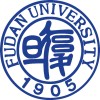
Wake up Symptomatic Stroke - Benefit of Intravenous Clot Busters or Endovascular Intervention
StrokeThe purpose of the trial is to study the safety and the effectiveness of using CT Perfusion studies as an indicator to treat stroke patients with unknown time of onset.

Autologous Hematopoietic Stem Cell Transplantation in Ischemic Stroke
StrokeThe purpose of this study is to evaluate the safety and efficacy of autologous peripheral hematopoietic stem cell transplantation in ischemic stroke.

Combined tDCS+PNS After Acute Stroke
Acute Ischaemic StrokeRecent work showed that application of peripheral nerve and cortical stimulation independently can induce 10-15 % improvement in motor performance in patients with chronic stroke. The purpose of this study was to compare in post-stroke hemiplegic patients the effect on motor recovery of one session of anodal transcranial direct current stimulation to the ipsilesional primary motor cortex (M1) combined with a peripheral radial nerve electrical stimulation (rEPNS) to the paretic hand repeated 5 successive days with the effect of the same peripheral nerve stimulation combined with sham tDCS. Design: randomized, double-blind, parallel controlled clinical trial. Patients eligible for the study: Acute ischaemic stroke Primary outcome measure: Jebsen Taylor test Secondary outcome measures Nine peg hole test Hand tapping grip and wrist force Cortical excitability of Ipsilesional M1(TMS) Follow-up: 30 days

Evaluation of Effectiveness of Nutritional Counseling in Patients After Stroke
StrokeCardiovascular DiseasesStroke is the leading cause of disability worldwide and the leading cause of death in Brazil. It is estimated that about 18 million people will have a stroke in 2015 and approximately one third of these resulting in death. The factors most important modifiable risk for stroke include high blood pressure (hypertension), diabetes, smoking, dyslipidemia, sedentary lifestyle and obesity. Acting on these risk factors can be reduced by 88% the risk of another stroke. Healthy eating is among the changes in lifestyle that are recommended for prevention and treatment of one of the main risk factors for stroke. Studies show that the adoption of the DASH diet can significantly reduce blood pressure and the result is even more significant in hypertensive patients, making this diet a new alternative in the prevention and treatment of hypertension and consequently stroke. Compliance therapy is a determining factor for success in the treatment of chronic diseases. Adherence to long-term treatment in developed countries is around 50% and in developing countries the rates are even lower. The aim of this study is to evaluate the effectiveness of nutritional counseling in an adapted DASH style diet on body weight, glycemic control, blood pressure values and improved lipid profile compared to the usual diet without nutritional counseling in patients with stroke within the last 3 months. The hypothesis is that nutritional counseling with an adapted DASH style diet reduces cardiovascular risk factors compared with the usual diet without nutritional counseling in patients with stroke within 3 months. The stroke patients will be selected in the hospitalization or in the outpatient clinic of Hospital de Clínicas de Porto Alegre in a period up to 3 months after ischemic stroke. The patients will be randomized to one of the 2 groups. In the first visit they will be submitted to a social class and international physical activity questionnaire and they will be submitted to a food frequency questionnaire, measures of weight, height, waist circumference, hip and neck, blood pressure and cholesterol and glucose measurements at the baseline, 30 days and 3, 6, 9 and 12 months. The main endpoints will be the change in the body weight, blood glucose, blood pressure values and lipid profile.

Manipulation of Arterial Pressure in Acute Ischemic Stroke
StrokeAcuteThis is a controlled clinical trial among non thrombolysed acute ischemic stroke patients to determine the effects of three levels of arterial pressure on death and neurological disability. After the admission in the vascular unit of the Emergency Department the patients are randomized to maintain during the first 24h the Systolic Arterial Pressure in tree levels of pressure: 140 to 160 mmHg; 161 to 180 mmHg and 181 to 200 mmHg. The end point of the study is the Modified Rankin score and mortality in three month after the discharge.

Power-Assisted Therapeutic Electrical Stimulation to Upper Extremities
StrokePower-assisted therapeutic electrical stimulation (TES) or conventional TES to upper extremities in acute stroke patients were performed in a randomized controlled trial. The changes in finger and hand function will be evaluated. The hypothesis is that a power-assisted TES is more effective than a conventional TES.

Effectiveness and Safety of Angongniuhuang Pill on Restoring Consciousness for Patients Who Have...
StrokeAcute Ischemic StrokeThis study will determine if Angongniuhuang Pill (Composed of Niuhuang, Yujin, Xijiao, Huangqin, Huanglian, Xionghuang, Zhizi, Zhusha, Bingpian, Shexiang, and Zhenzhu) will have a better effect in restoring consciousness for patients who have suffered from an acute ischemic stroke. The study is designed to look at both consciousness level and overall recovery and recovery of motor function, for example muscle strength and coordination.

Safety and Effectiveness of Cortical Stimulation in the Treatment of Stroke Patients With Upper...
StrokeHemiparesisThe purpose of this study is to assess the safety and effectiveness of cortical stimulation delivered concurrent with rehabilitation activities to enhance motor recovery in patients suffering from hemiparesis affecting the upper extremity following a stroke.

Effects of Exercise on Endothelial Function in Stroke Patients
StrokeCerebrovascular DisordersThis study examines the hypothesis that 6 months of treadmill aerobic exercise training improves fibrinolysis (clot defense mechanism) and vasomotor function in chronic hemiparetic (muscular weakness or partial paralysis restricted to one side of the body) stroke patients compared to a control intervention, and that these changes are associated with reduced plasma insulin levels and improved insulin sensitivity / glucose metabolism in this population.

Study to Determine The Effect of a Drug Called Neupogen on Stroke Recovery
Ischemic StrokeCirculating bone marrow and blood vessel precursors home in to sites of ischemia and aid regeneration of injured tissue Increasing the number of circulating precursors will improve in regeneration of damaged brain following ischemic stroke.
